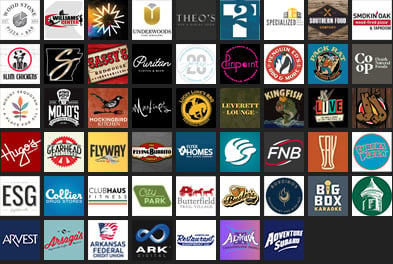
Ozark Pale Ale, Paleo Ale, and Lost 40 Pale Ale
Brian Sorensen
Beer has come a long way over the last few decades. Light lager’s stranglehold on the industry loosened significantly as small brewers rediscovered traditional beer styles (and started putting their own spin on the classics).
First there were pales, browns, and stouts; later it was all about the double this or double that. Barrel-aged and sour beers have been the rage most recently. While a trip to the beer store in the early 80s only resulted in a handful of choices, nowadays the options seem endless.
Even though beer is fast evolving, there is one traditional style that has stood the test of time. It bridged the old and new schools of brewing. A generation of beer drinkers gave up their fathers’ light lagers after discovering its unique characteristics for the first time.

In a sense, the pale ale is the torchbearer of the modern craft beer movement.
Sierra Nevada’s version – which was introduced in March 1981 – is particularly noteworthy because of the paradigm shift it caused for the average beer drinker. Owner and brewmaster Ken Grossman used the new hop variety Cascade for a bitter citrus effect that was (at that time) way outside the norm. Pale and crystal malts provided balance, but the beer’s defining characteristic was unmistakably hoppy.
Beer historian Tom Acitelli recently wrote that Sierra Nevada Pale Ale is “one of the most influential beers in living memory.” Sure enough, most American pale ales of the last 35 years have emphasized the citrus, floral, and spicy characteristics of hops – just like Sierra Nevada’s.
Pale ales are simple in their composition but easy to mess up. They can’t be too hoppy or too sweet. Balance is more important in a pale than with its hopped-up cousin the IPA. Alcohol by volume needs to stay in the 4-6% range, though some can push that upper threshold.
American versions tend to emphasize the floral and citrus characteristics of hops, while traditional English varieties are more malt-forward. The English pale ale is almost indistinguishable from a bitter (otherwise known as ESB). Springdale’s Core Brewing has a very good example of bitter available locally.
There are three American-style pales produced instate that are available in cans. Here are a few thoughts about each:
Fossil Cove Paleo (5.5% ABV) – This is a balanced pale, but with the most malt character of the three. Grapefruit and pine aromas ride atop a base of toasted bread. Bitterness is unobtrusive, and adequately balances the sweetness of the grain. Paleo is one of the most popular beers in Northwest Arkansas for a reason.
Lost Forty Pale Ale (5.5% ABV) – This capital city beer is the closest resemblance to the Sierra Nevada standard, with an abundance of citrus from the use of Cascade. Pine and resin give the bitterness an edge, and the malt provides just enough heft to balance things out. Even with the malt backbone, the overall impression of this one centers on hops.
Ozark APA (4.3% ABV) – This is the lightest pale of the bunch. Ozark’s take is crisp and refreshing. The flavor is dominated by grassy hops, with just a touch of sweetness. The hop character is unique; a slight deviation from the more citrus-dominated versions of the style. This is a beer ideally suited for warm Arkansas summers.
Other local examples include Apple Blossom Armstrong APA, Bentonville Brewing NWA Pale Ale, New Province Civilian Pale Ale, and Saddlebock Pale Ale.
Beer trends will come and go, but in the end there will always be pale ale. Make sure you get to know your local brewer’s take on this pioneering style.

